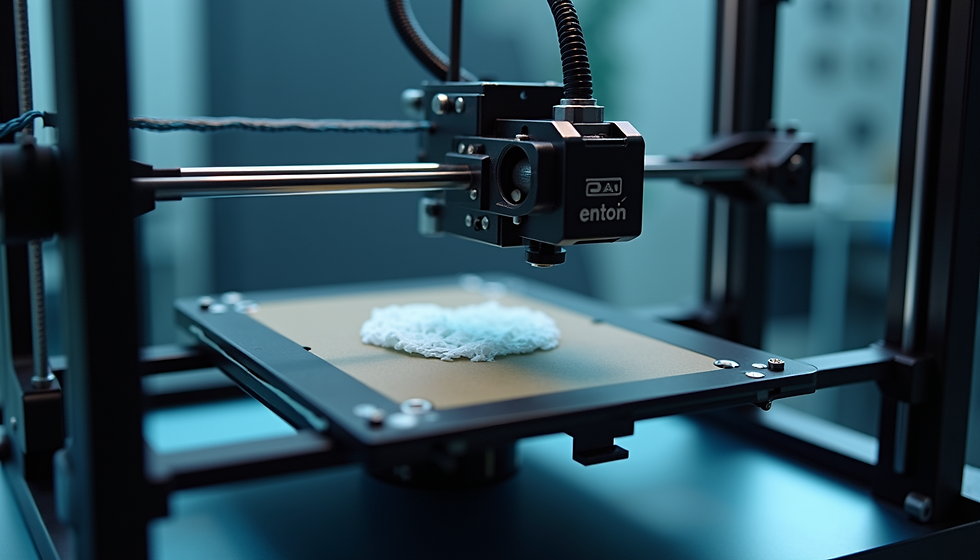How to Tell If Your Filament Is Bad or Damaged
- Mesh Mayhem
- Apr 30, 2023
- 3 min read

If you’re an avid 3D printer user, you’ve likely experienced the frustration of filament that simply won’t work. Whether it’s because it’s been damaged, or just plain bad, it’s important to be able to spot the signs of bad filament so you can move on to a better-quality product.
If you print with filament that has been exposed to humidity, you may experience several issues. The filament may become brittle and break easily, causing jams in the extruder. Additionally, the filament may not properly adhere to the build plate, resulting in poor print quality. The filament can also absorb moisture, which can cause it to expand and warp, leading to uneven layers and gaps in the print. Finally, the filament may release gases as it melts, resulting in poor print quality and poor layer adhesion.
Here are some ways to tell if your filament is bad or damaged:
1. Check the Filament Diameter – The diameter of your filament should be consistent throughout, and should not be more than 1mm off from the specified size. If it’s too thin or too thick, it may not be up to standard and could cause problems with your prints.
2. Inspect the Filament Quality – The surface of the filament should be smooth, without any visible signs of damage or deformity. If you see any bumps, ridges, or other irregularities, this could be a sign the filament has been damaged.
3. Check the Filament’s Color – The color of the filament should be consistent, without any streaks or discoloration. If there are any inconsistencies in the color, this could be a sign that the filament has been exposed to UV light or heat, which can cause it to degrade over time.
4. Inspect the Filament for Contamination – If the filament appears to be covered in dirt or dust, it could be contaminated, which will affect the quality of the prints.
5. Smell the Filament – If the filament has a strong, chemical odor, this could be a sign that it’s been exposed to moisture or chemicals, which can cause it to degrade over time.
6. Test the Filament – If you’re still unsure about the quality of the filament, you can always test it out by printing a small object. If the object doesn’t print correctly, or the filament is jamming in the extruder, this could be a sign that the filament is bad or damaged.
By keeping an eye out for these signs, you can easily tell if your filament is bad or damaged, and make sure you’re using the best quality filament for your 3D printing projects.
Some tips on storing and avoiding damage to your filaments
1. Store in a Dry and Cool Place – Storing filament in a dry and cool place can help preserve its quality and prevent it from absorbing moisture.
2. Keep it in an Airtight Container – Keeping the filament in an airtight container can help keep it dry and protect it from dust, dirt, and other contaminants.
3. Keep it Away from Direct Sunlight – Direct sunlight can cause the filament to degrade over time, so storing it in a dark place is best.
4. Check for Signs of Damage – Inspect the filament for any visible signs of damage or deformity, such as bumps, ridges, or discoloration.
5. Keep Track of the Date – Keeping track of the date can help you keep track of the filament’s age, which can affect its quality.
6. Use the Right Extruder Settings – Using the wrong extruder settings can cause the filament to jam or melt, which can damage it. It’s best to use the settings recommended by the manufacturer.
If you’ve been printing with the same filament for a while, you may start to notice that it’s getting softer and more pliable. This could be a sign that it has been exposed to too much heat, which can cause it to become brittle and break easily. If this is the case, it’s best to discard the filament and start with a fresh spool.




Comments